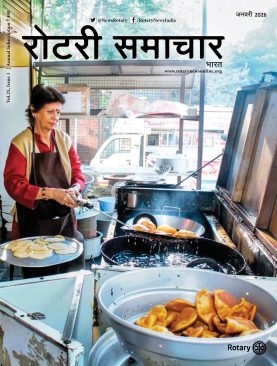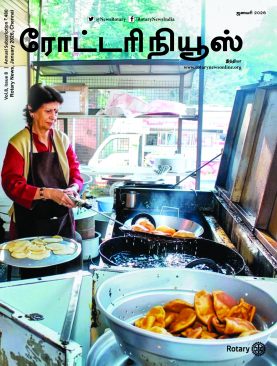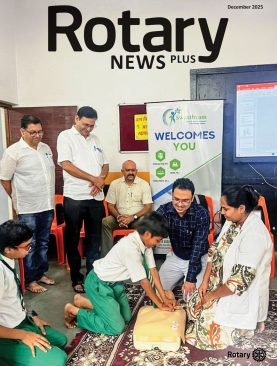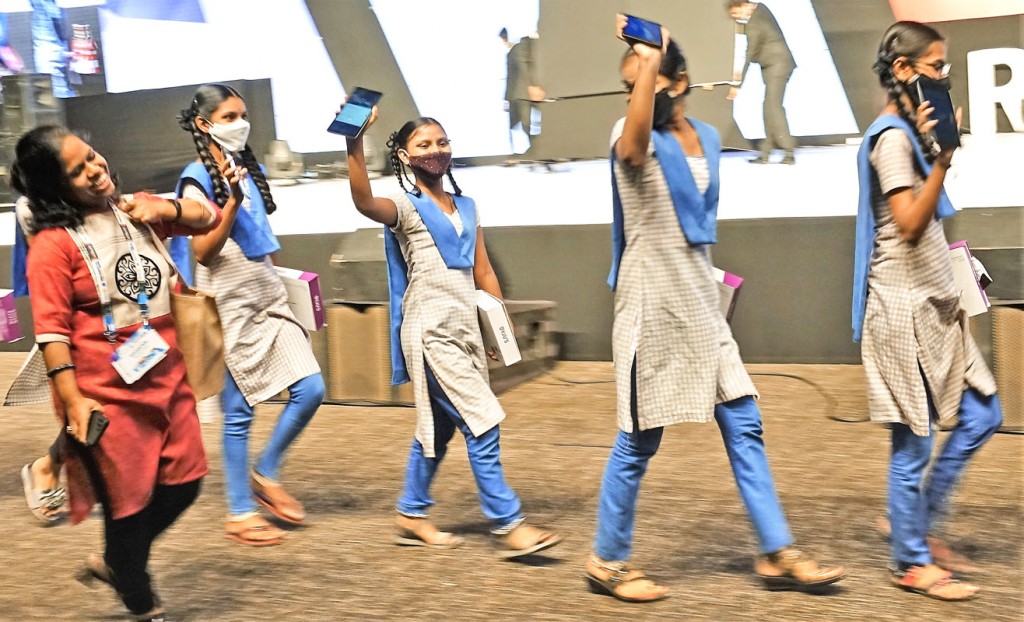
Why is an organisation like CRY — Child Relief and You — required? Because in this country, as yet, all of us are not equal. All our children don’t get equal opportunities to education, healthcare and the life they deserve,” said Puja Marwaha, CEO of CRY, addressing a session on girls’ empowerment chaired by RI Director A S Venkatesh at the RI presidential conference in Hyderabad.
Painting a grim picture of how Covid had affected the learning of disadvantaged Indian children who had no access to smartphones to benefit from online classes, she said the number was an astounding 75 per cent “as only 25 per cent of our children have access to smartphones.”
Covid shut down schools for the longest ever time, and considering that online education in our country is limited with internet access being only 4 per cent, learning really took a big hit. With limited smartphone access, 75 per cent of children had no access to education for two years. In all, 600 schooling days were lost for them. “These children had no school, no inputs, no learning.
We are now running bridge classes for them and our teachers have reported that these children have gone back four years during the pandemic. They are actually trying to drop the curriculum and reteach the concepts again.”
Making an impassioned plea on behalf of India’s 75 per cent children, Marwaha said: “This is an emergency time as far as India’s children are concerned. Right now, our children need us, not because of Covid but because Covid took them out of school and most of the poor children get protected in their schools. Because they are in school, they don’t get married, or put into the labour force. They get midday meals which went as ration for the whole family.” The result was falling nourishment and dropping out of school. “On an emergency basis we should do all we can to get our children back to school,” she said.
If we as a society and country put a little bit of money that we have reserved for fancy temples, rockets and missiles, into schools, making education free till Class 12, it would really benefit the nation.
— Puja Marwaha, CEO, CRY
Presenting a grim picture of the girl child being even more disadvantaged, she said, “we have some crazy numbers in this country; 19 million girls are out of schools… a huge number of girls who go missing in secondary school.” At primary school enrolment, we have 98 per cent in Grade 1, but when girls reach Grade 8, they start dropping out, and only 57 per cent go to the 8th grade. “We lose 47 per cent girls; and you might well ask what does Grade 8 really mean? Really nothing.”
Spelling out “some of the biggest barriers” that prevent girls from entering high school, Marwaha said, “The first barrier is the availability of schools. Research tells us that most girls finish school at whatever grade available in their village or at a distance of 3–5km. So if that village school ends at Grade 8, they drop out. If it ends in Grade10, it improves their chance of staying in school despite economic barriers.”
But the “biggest barriers in our country vis-a-vis girls are in our heads and hearts.” Referring to the shocking spectacle of the front row in the auditorium of the conference being cleared of women because a swami addressing the previous session did not want to see women in the first two rows, she said, “As you could see before this session, the whole front row had to be occupied only by men because women are considered dirty or polluted. And that is the biggest barrier too. That women, who are holding up half this earth, are considered dirty.”
Returning to the core point of making education easier for girls, she said higher secondary schools should be made available in villages, and single gender schools will have to be provided too. “In many areas parents are reluctant to send girls to mixed schools, so we must make all-girls’ schools available in such areas.”
Also, it was necessary to make education free as another big barrier to girls’ continuing their education was economics. This brought her to another abominable part of the Indian narrative… that it was not “wise to invest in girls because ladki paraya dhan hoti hei.. she is not yours, she belongs to some other family. How ridiculous is that. You gave birth to her as much as you did to the son.”
The total number of malnourished children in our country, according to government figures, are higher than all the Sub- Saharan African countries put together.
The girl child has to bear the brunt of such atrocious notions. “So the school becomes a place where girls are not allowed to ask questions. Girls should keep quiet, they should be seen and not heard. This is how girls are discriminated against. We know several instances where teachers, including women teachers, tell girls: ‘Oh, eventually you are going to do household work. So if you’re not very good in studies, don’t bother, don’t come to school.’ ”
Add to this a household where a younger sibling has to be looked after, or the parents have limited money, the girl is invariably pulled out of school and the boys’ education gets priority. “Unfortunately, girls are not nurtured and encouraged. When they are nurtured and encouraged, we all know they invariably do better than boys.”
Marwaha said probes done by CRY had revealed that things such as corporal punishment, the atmosphere of the class or having less number of teachers are also factors that influence dropout of girls. “Once you go past all these, supposing there are schools available in their area, are close enough and safety is assured, the retention of girls improves. But most high schools are typically 10–15km away from villages, and distance and safety are a big concern when it comes to girls’ schooling.”
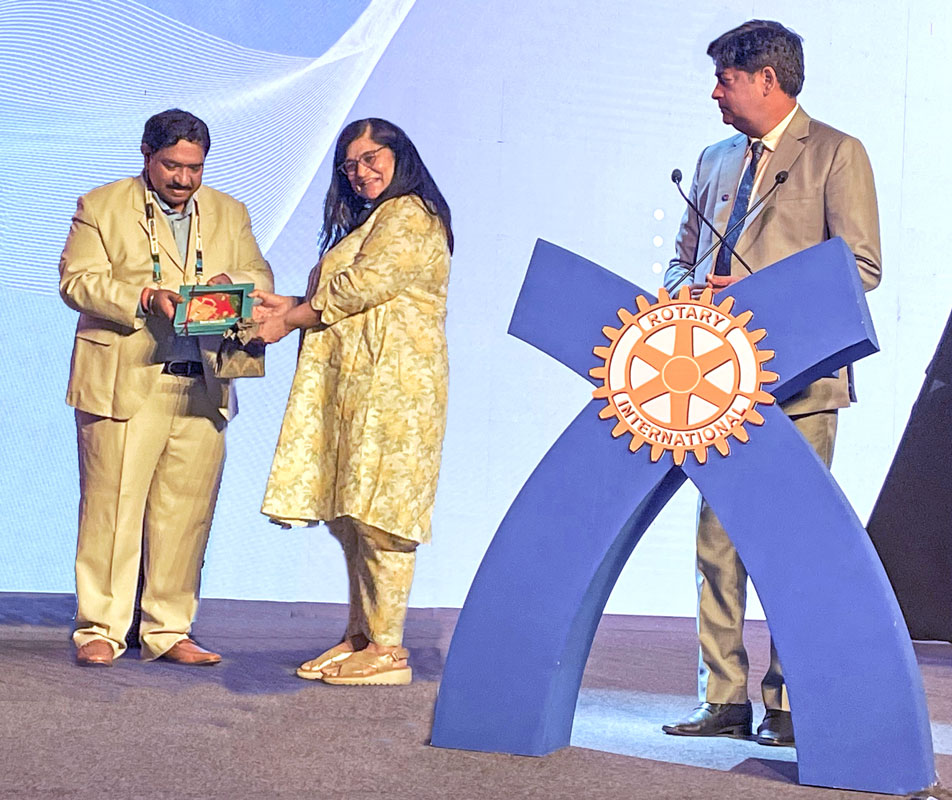
Complimenting Rotarians for building separate toilets for girls across India, the CRY CEO said, “This is one of the best things that you have addressed, because once you have toilets that are clean and have water, the retention of girls improves.”
Giving details of a partnership between CRY and the University of Warwick, she said that when they analysed CRY’s primary data, “they found that in any area where safety was better, there were more girls in schools. When the area is unsafe with a high crime rate, girls drop out, and as a consequence, are married early.”
But when there are better roads with good bus connectivity, or girls are given cycles under various schemes, the situation improves… accessibility and safety were the mantra.
She added that “a distressing per cent of girls drop out because they get married even when they are children.” But it is very difficult to get any concrete evidence of this through numbers because such underage marriage, clearly in contravention of legal norms, do not get reported. “If we as a society and country put a little bit of money that we have reserved for fancy temples, rockets and missiles, into schools, making education free till Class 12, it would really benefit the nation.”
Unfortunately, girls are not nurtured and encouraged. When they are nurtured and encouraged, we all know they invariably do better than boys.
Marwaha conceded that both the central and state governments have several schemes such as the Rashtriya Kishori Yojana that encourage parents to keep girls in schools, but over 90 per cent of parents were not even aware of such schemes. “But we as civil society, you and I, need to make people aware of such schemes, instead of just saying we will give you money.”
The next important factor was affordability; poverty resulted in the girl child being pulled out of school. “You might well say it is very productive to manage a home, bring up children, etc, so we did a cost-benefit analysis. What we found was startling.”
Every additional year of education increased a girl’s ability to attain some goals in life “by a huge percentage. CRY got a committee of economists, researchers and others to measure the impact of a girl child continuing in school; the first was delayed marriage.”
The future of our country depends on how well we educate our girl children, groom and train them to bring them into the mainstream of our nation.
— A S Venkatesh, RI Director
If a girl gets married at 13, has a baby at 14… at this point she’ll most likely have anaemia, the baby will be underweight, resulting in huge health liabilities for the family. “She will never be able to earn any money, the child will most likely die, and there might be several other underage pregnancies, further endangering the girl’s health. Malnourished children will grow into malnourished adults who in turn will again have malnourished children.”
The repercussions of this vicious cycle were that “the total number of malnourished children in our country — and these are government figures — are higher than all the Sub-Saharan African countries put together. People tell me don’t give us such bad news, but the fact is that Bangladesh has lower infant mortality than us.”
It was estimated that one rupee invested in a girl will fetch a return of ₹15. “That’s all it takes, not millions, frankly as a nation we can afford it. But we are so kanjoos when it comes to the girl child. So 19 million girls are left out of school.” The benefits that accrue for every additional year in school are phenomenal; marriage is delayed, they will take up work, value themselves more and make meaningful contributions to the nation’s development, creating a more equitable and accepting society.
Once we know the importance of the education of girls or one half of our population, “it costs nothing for a country and budget of our size to invest in schools. It makes not just moral and equity sense, it also makes economic sense, and that is really the argument that CRY is trying to make.”
Most of the poor children get protected in their schools. Because if they are in school, they don’t get married, or put into the labour force.
Chairing the session, RI Director Venkatesh said “the future of our country depends on how well we educate our girl children, groom and train them to bring them into the mainstream of our nation. We are proud that in the RILM programme Asha Kiran, there is a component to return children, including girls who have dropped out, to school.”
“I asked Puja Marwaha backstage what was the one motto and mission of CRY and she said our founders wanted to ensure that every citizen of this country becomes a stakeholder in its development…we are targeting retail and not big ticket contributions that will reduce the number of children out of school.”
He said that when through Asha Kiran RILM sent children back to school, it is much more than just one more child back in school. “It is about nation-building and ensuring that universal quality education is available to girls, with technology inputs. So RILM and BYJU’s have forged a partnership to provide free of cost preloaded Tablets to children of government schools.”
Pictures by Rasheeda Bhagat


